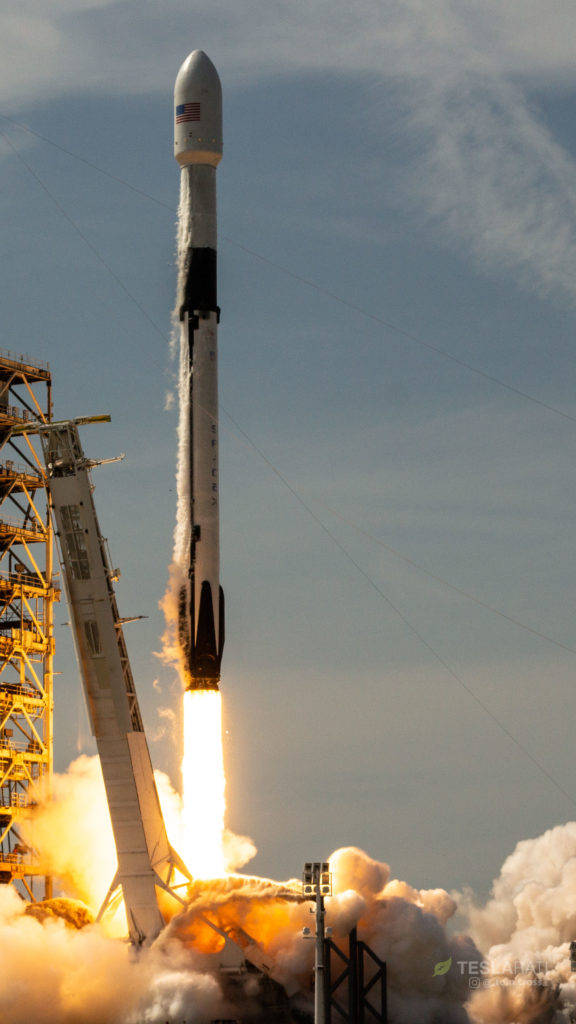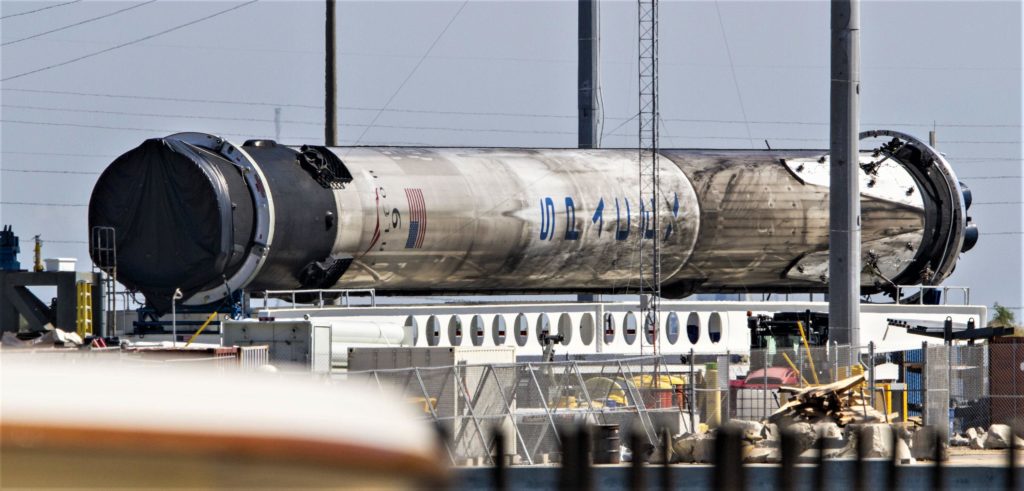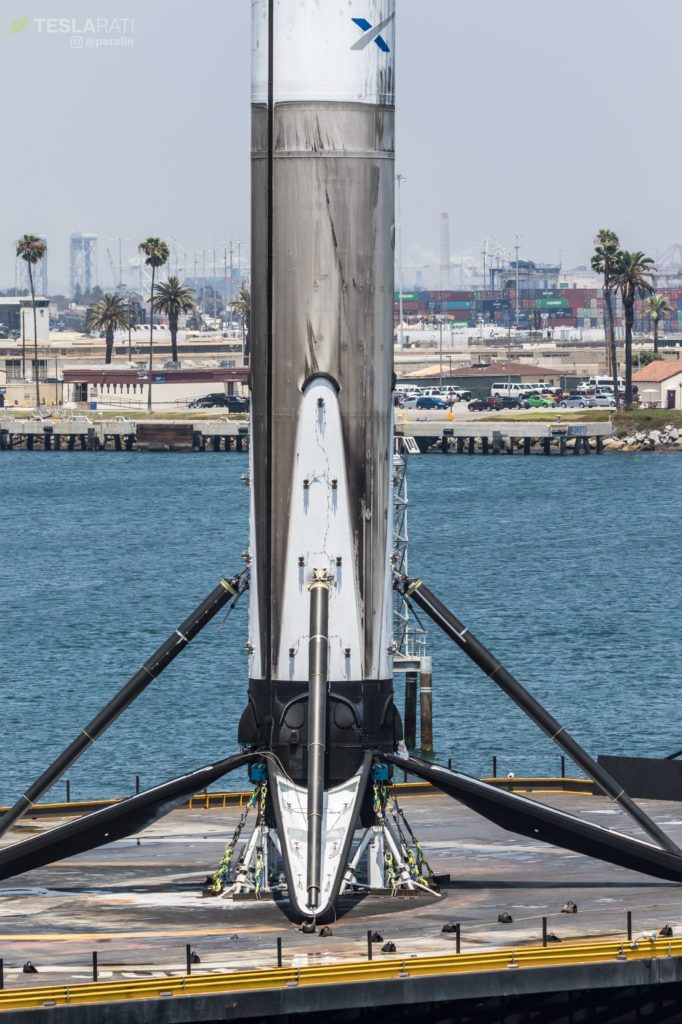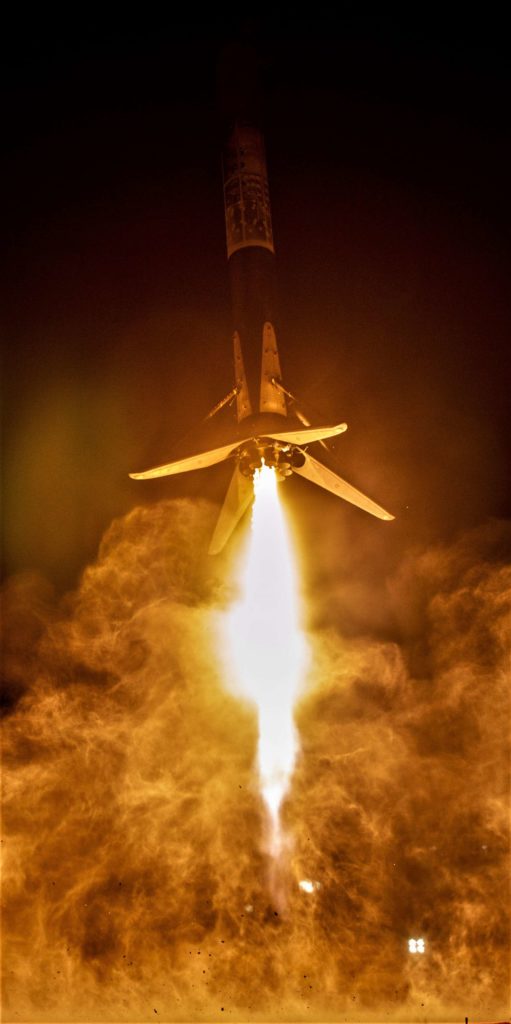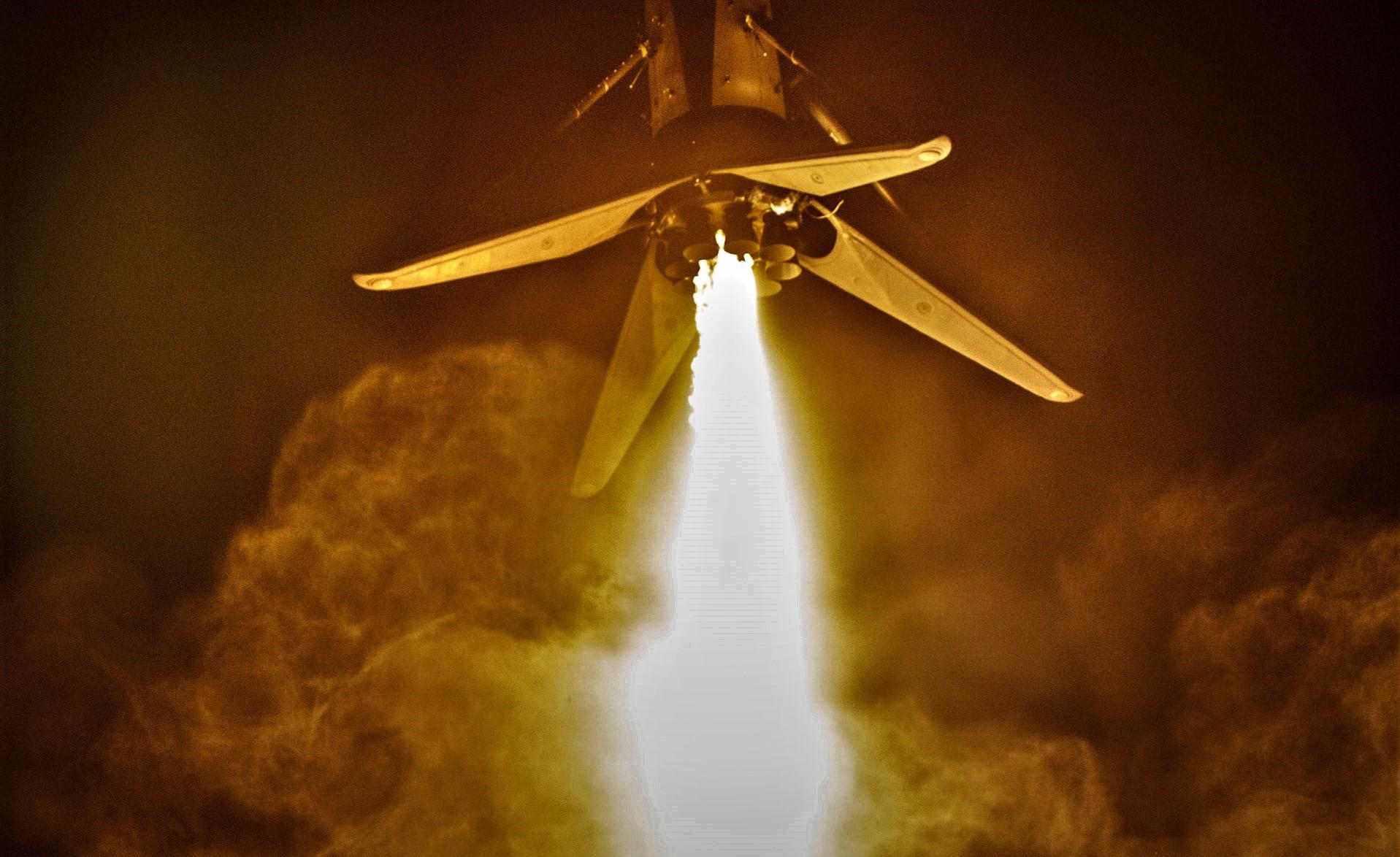

News
SpaceX’s next step towards airplane-like Falcon 9 reusability expected in 2018
Speaking at an impromptu IAC 2018 talk, Vice President of Build and Flight Reliability Hans Koenigsmann confirmed earlier this month that SpaceX is aiming to conduct its first triple reuse of a Falcon 9 booster before the year is out.
While not entirely confident on the specific mission it would end up flying on, Koenigsmann floated the company’s next Vandenberg, CA launch – Spaceflight Industry’s SSO-A rideshare – as a prime candidate, tentatively targeting November 19th.
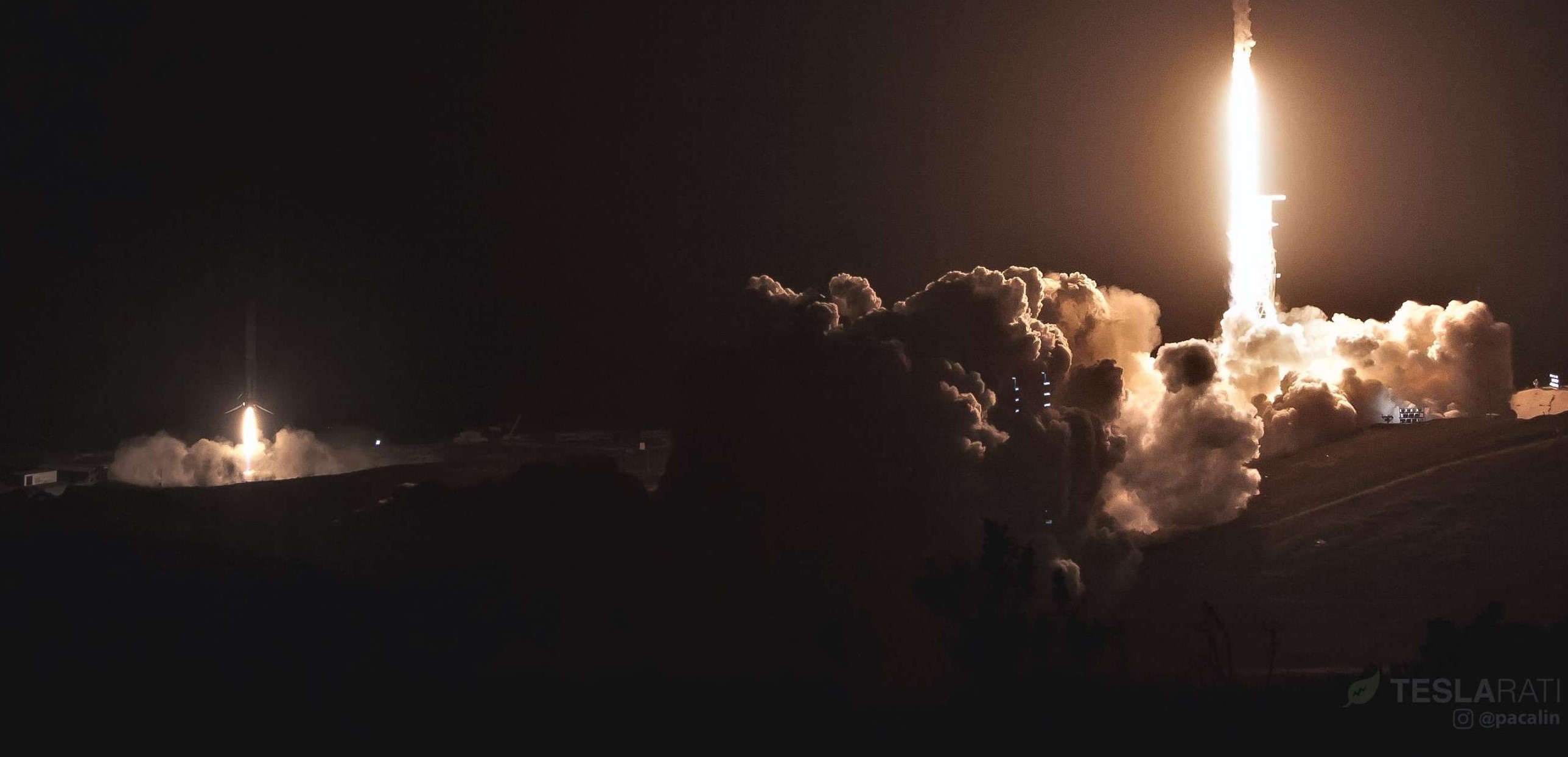
As of November 19th, only two Falcon 9 Block 5 boosters will be candidates for a third reuse – B1046 and B1048. Falcon 9 B1048 launched for the second time just days ago, placing Earth observation satellite SAOCOM 1A in orbit before performing the first return-to-launch-site (RTLS) recovery on the West Coast, also marking the debut of SpaceX’s long-dormant LZ-4 landing zone. Aside from playing a role in one of the most spectacular launch-related light shows ever created, B1048 is noteworthy for being SpaceX’s second-fastest Falcon 9 booster turnaround, taking just 74 days to go from its first launch and landing to its second operational use.
While B1046 – launched first on May 11th and again on August 7th – will have had more than three months of potential refurbishment by SSO-A’s Nov. 19 launch target, both of its two launches involved relatively high-energy profiles with heavy payloads, resulting in higher (and thus more damaging) heating during reentry. B1048, on the other hand, has launched a heavy set of 10 Iridium NEXT satellites into a low-energy orbit and then launched the much lighter SAOCOM 1A spacecraft into an equally low orbit, translating to much more forgiving reentries and thus much easier refurbishment.
Later at IAC 2018, Hans spoke in more detail about the leading challenges facing SpaceX in this relatively mature stage of reusable rocketry optimization. Most notably, he seemed to imply that the most difficult aspect of refurbishing Falcon 9 boosters was damage caused to its nine Merlin 1D engines while taking the brunt of Falcon 9’s reentry inertia, not hugely surprising given the awkward geometry and sheer force behind a booster traveling more than 2000 meters per second.
- Falcon 9 Block 5 completed its first launch on May 11, carrying the Bangabandhu-1 communications satellite to geostationary transfer orbit. (Tom Cross)
- It’s currently unclear whether B1046 or B1048 will become the first SpaceX rocket to fly three times. (Tom Cross)
- Falcon 9 B1048 returned to Port of Los Angeles aboard drone ship Just Read The Instructions after its first launch. July 27. (Pauline Acalin)
- Falcon 9 B1048.2 landed at LZ-4 after its second successful launch. (SpaceX)
It’s possible that SpaceX will set B1046 up as the pathfinder for all future reusability milestones, including the 3rd, 4th, and 5th booster flights and beyond. However, B1048 may well be in better condition, is already directly stationed at its refurbishment facility, and will have another relatively low-energy launch ahead of it if assigned to SSO-A. Critically, flying for the third time on SSO-A – as few as 43 days after its second orbital launch – will require B1048 to break SpaceX’s record for faster Falcon 9 booster turnaround by more than 50%, despite the fact that it would have two full operational missions under its belt.
It may sound more mundane than other crowning SpaceX achievements, particularly with the focus on numbers that might seem arbitrary and unimportant at first glance, but it’s actually difficult to overstate just how important the third reuse of a Falcon 9 booster is, particularly if that pathfinder happens to break refurbishment records at the same time.
SpaceX’s ultimate goal is to build and launch rockets with airplane-like reusability and reliability, eventually flying boosters and other components upwards of 100-1000 times each, and the jump from two flights per core to three will be the best evidence yet that the company is making rapid progress in that direction.
For prompt updates, on-the-ground perspectives, and unique glimpses of SpaceX’s rocket recovery fleet check out our brand new LaunchPad and LandingZone newsletters!
News
Tesla begins Robotaxi certification push in Arizona: report
Tesla seems serious about expanding its Robotaxi service to several states in the coming months.

Tesla has initiated discussions with Arizona transportation regulators to certify its driverless Robotaxi service in the state, as per a recent report from Bloomberg News. The move follows Tesla’s launch of its Robotaxi pilot program in Austin, Texas, as well as CEO Elon Musk’s recent comments about the service’s expansion in the Bay Area.
The Arizona Department of Transportation confirmed to Bloomberg that Tesla has reached out to begin the certification process for autonomous ride-sharing operations in the state. While details remain limited, the outreach suggests that Tesla is serious about expanding its driverless Robotaxi service to several territories in the coming months.
The Arizona development comes as Tesla prepares to expand its service area in Austin this weekend, as per CEO Elon Musk in a post on X. Musk also stated that Tesla is targeting the San Francisco Bay Area as its next major market, with a potential launch “in a month or two,” pending regulatory approvals.
Tesla first launched its autonomous ride-hailing program on June 22 in Austin with a small fleet of Model Y vehicles, accompanied by a Tesla employee in the passenger seat to monitor safety. While still classified as a test, Musk has said the program will expand to about 1,000 vehicles in the coming months. Tesla will later upgrade its Robotaxi fleet with the Cyercab, a two-seater that is designed without a steering wheel.
Sightings of Cybercab castings around the Giga Texas complex suggests that Tesla may be ramping the initial trial production of the self-driving two-seater. Tesla, for its part, has noted in the past that volume production of the Cybercab is expected to start sometime next year.
In California, Tesla has already applied for a transportation charter-party carrier permit from the state’s Public Utilities Commission. The company is reportedly taking a phased approach to operating in California, with the Robotaxi service starting with pre-arranged rides for employees in vehicles with safety drivers.
News
Tesla sets November 6 date for 2025 Annual Shareholder Meeting
The automaker announced the date on Thursday in a Form 8-K.

Tesla has scheduled its 2025 annual shareholder meeting for November 6, addressing investor concerns that the company was nearing a legal deadline to hold the event.
The automaker announced the date on Thursday in a Form 8-K submitted to the United States Securities and Exchange Commission (SEC). The company also listed a new proposal submission deadline of July 31 for items to be included in the proxy statement.
Tesla’s announcement followed calls from a group of 27 shareholders, including the leaders of large public pension funds, which urged Tesla’s board to formally set the meeting date, as noted in a report from The Wall Street Journal.
The group noted that under Texas law, where Tesla is now incorporated, companies must hold annual meetings within 13 months of the last one if requested by shareholders. Tesla’s previous annual shareholder meeting was held on June 13, 2024, which placed the July 13 deadline in focus.
Tesla originally stated in its 2024 annual report that it would file its proxy statement by the end of April. However, an amended filing on April 30 indicated that the Board of Directors had not yet finalized a meeting date, at least at the time.
The April filing also confirmed that Tesla’s board had formed a special committee to evaluate certain matters related to CEO Elon Musk’s compensation plan. Musk’s CEO performance award remains at the center of a lengthy legal dispute in Delaware, Tesla’s former state of incorporation.
Due to the aftermath of Musk’s legal dispute about his compensation plan in Delaware, he has not been paid for his work at Tesla for several years. Musk, for his part, has noted that he is more concerned about his voting stake in Tesla than his actual salary.
At last year’s annual meeting, TSLA shareholders voted to reapprove Elon Musk’s compensation plan and ratified Tesla’s decision to relocate its legal domicile from Delaware to Texas.
Elon Musk
Grok coming to Tesla vehicles next week “at the latest:” Elon Musk
Grok’s rollout to Tesla vehicles is expected to begin next week at the latest.

Elon Musk announced on Thursday that Grok, the large language model developed by his startup xAI, will soon be available in Tesla vehicles. Grok’s rollout to Tesla vehicles is expected to begin next week at the latest, further deepening the ties between the two Elon Musk-led companies.
Tesla–xAI synergy
Musk confirmed the news on X shortly after livestreaming the release of Grok 4, xAI’s latest large language model. “Grok is coming to Tesla vehicles very soon. Next week at the latest,” Musk wrote in a post on social media platform X.
During the livestream, Musk and several members of the xAI team highlighted several upgrades to Grok 4’s voice capabilities and performance metrics, positioning the LLM as competitive with top-tier models from OpenAI and Google.
The in-vehicle integration of Grok marks a new chapter in Tesla’s AI development. While Tesla has long relied on in-house systems for autonomous driving and energy optimization, Grok’s integration would introduce conversational AI directly into its vehicles’ user experience. This integration could potentially improve customer interaction inside Tesla vehicles.
xAI and Tesla’s collaborative footprint
Grok’s upcoming rollout to Tesla vehicles adds to a growing business relationship between Tesla and xAI. Earlier this year, Tesla disclosed that it generated $198.3 million in revenue from commercial, consulting, and support agreements with xAI, as noted in a report from Bloomberg News. A large portion of that amount, however, came from the sale of Megapack energy storage systems to the artificial intelligence startup.
In July 2023, Musk polled X users about whether Tesla should invest $5 billion in xAI. While no formal investment has been made so far, 68% of poll participants voted yes, and Musk has since stated that the idea would be discussed with Tesla’s board.
-

 Elon Musk1 week ago
Elon Musk1 week agoTesla investors will be shocked by Jim Cramer’s latest assessment
-

 Elon Musk3 days ago
Elon Musk3 days agoElon Musk confirms Grok 4 launch on July 9 with livestream event
-

 Elon Musk16 hours ago
Elon Musk16 hours agoxAI launches Grok 4 with new $300/month SuperGrok Heavy subscription
-

 News7 days ago
News7 days agoTesla Model 3 ranks as the safest new car in Europe for 2025, per Euro NCAP tests
-

 Elon Musk2 weeks ago
Elon Musk2 weeks agoA Tesla just delivered itself to a customer autonomously, Elon Musk confirms
-

 Elon Musk1 week ago
Elon Musk1 week agoxAI’s Memphis data center receives air permit despite community criticism
-

 Elon Musk2 weeks ago
Elon Musk2 weeks agoTesla’s Omead Afshar, known as Elon Musk’s right-hand man, leaves company: reports
-

 News2 weeks ago
News2 weeks agoXiaomi CEO congratulates Tesla on first FSD delivery: “We have to continue learning!”

